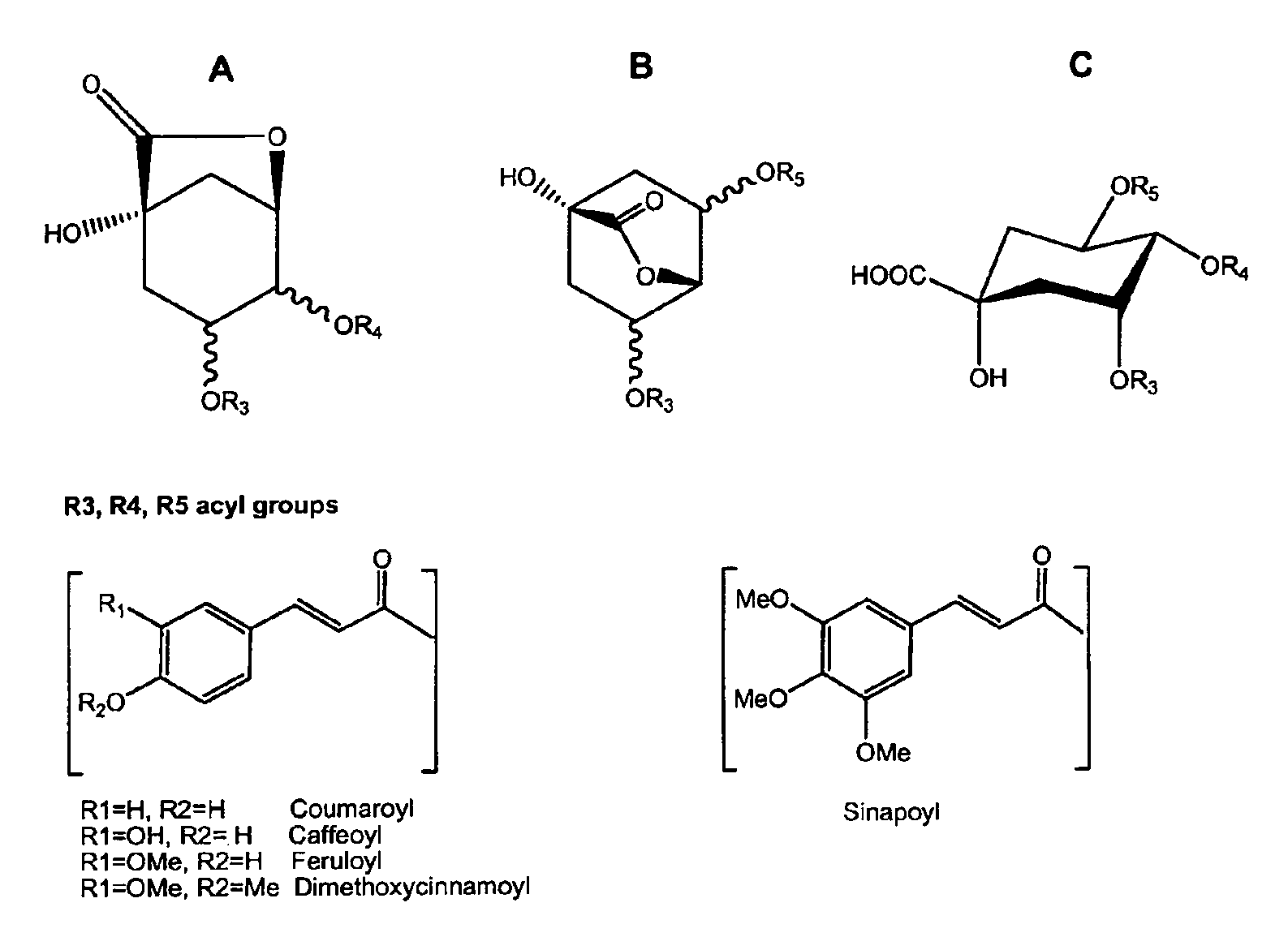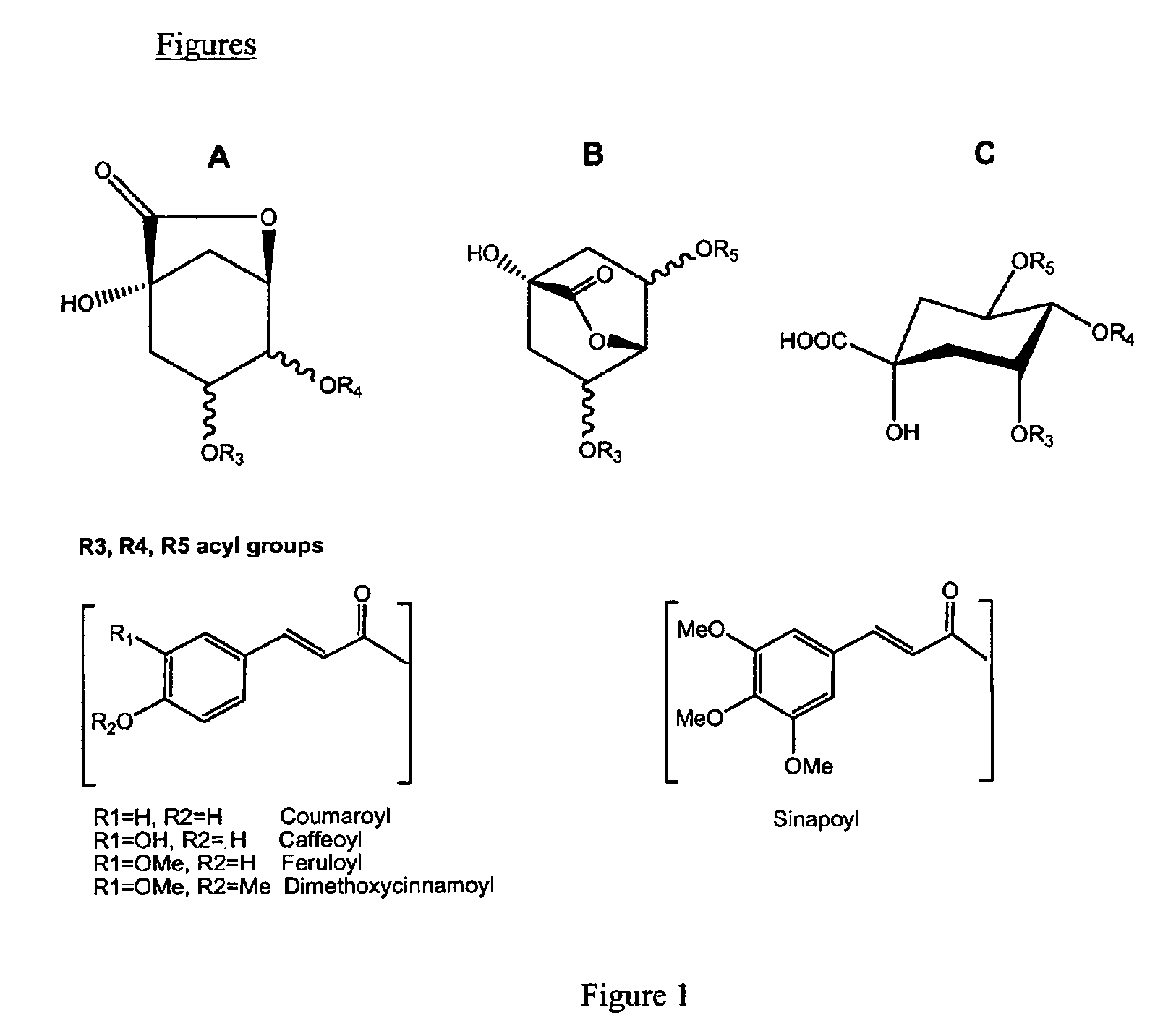Soluble Coffe Product
- Summary
- Abstract
- Description
- Claims
- Application Information
AI Technical Summary
Benefits of technology
Problems solved by technology
Method used
Image
Examples
example 1
Enzymatic Treatment of Soluble Coffee
[0091]Robusta coffee beans were roasted and ground. An aqueous extract was then prepared by treating the ground coffee beans at a temperature of from 110 to 130° C. so as to extract a yield of about 25 wt % of the total weight of the ground coffee beans. The extract was spray-dried.
[0092]15 g of dried coffee extract were dissolved in 500 ml of boiling water. After cooling to room temperature, the coffee solution (50 ml) was distributed into eight 100 ml flasks. Various amounts of immobilized hog liver esterase (0.2 U / mg of coffee, 0.5 U / mg of coffee, and 1 U / mg of coffee) were added to the coffee solutions. The flasks were immersed in a water bath heated to 40° C. and samples were withdrawn after 0 h, 2 h and 4 h reaction times. The mixtures were filtered (filters of 150 mm of diameter) to remove the enzyme and the obtained coffee solutions were diluted to 1.3% t.s. for sensory analysis.
Sample Analysis
[0093]Coffee samples were prepared at 1% t.s....
example 2
Treatment with Sorbents
[0096]Robusta coffee extract was obtained as described in example 1.
Method 1 (Samples 7 to 14)
[0097]3 g of Polyclar / PVPP (ex Sigma) or 3 g of active charcoal (Norit C granular) or 3 g of XAD4 or XAD16 (both ex Supelco) were added to 3 g of the Robusta extract in 200 mL of Millipore water. The suspension was stirred at room temperature for 2.5 h and filtered over filter paper (+Celite in the case of active charcoal). The recovered and partially saturated sorbent was used for two further, consecutive batches of fresh coffee in the same manner. The filtrates were freeze-dried in a Virtis Benchtop K apparatus.
Method 2 (Sample 15)
[0098]Continuous treatment on XAD 16 (30 g, column 2 cm internal diameter×20 cm height) was performed as follows. The sorbent was suspended in water and washed with water, ethanol and again water and then filled into the column. The coffee extract, 1.5% t.s. was continuously eluted through it. 200 mL fractions were collected at a flow rate...
example 3
Solvent Extraction
[0102]Robusta coffee extract was obtained as described in example 1. 3 g of Robusta extract dissolved in 200 mL of Millipore water were extracted with 200 mL of ethyl acetate. The organic extract was used to treat a second batch of fresh coffee extract (3 g in 200 mL) and step two was repeated a further two times. The resulting coffee extracts were separately stripped with ethanol (3 times each) and finally freeze-dried.
Sensory / Analytical Evaluation
[0103]The sensory / analytical evaluation of coffee fractions was conducted as described above. The results are given in the following table.
TABLE 7liquid / liquid extraction with partially saturated ethyl acetate5CQA:totalcaffeine:CyclesYield fromSensory3CQALCQA:3CQALSample(1)extract (2)score (3)(4)3CQAL (4)(4)161722.9132279308174975.43473127D01007.092034(1) Cycle “1” denotes that the solvent is fresh; cycle “4” denotes that the solvent is partially saturated (3 batches of extract having been previously extracted)(2) % by w...
PUM
 Login to View More
Login to View More Abstract
Description
Claims
Application Information
 Login to View More
Login to View More - R&D
- Intellectual Property
- Life Sciences
- Materials
- Tech Scout
- Unparalleled Data Quality
- Higher Quality Content
- 60% Fewer Hallucinations
Browse by: Latest US Patents, China's latest patents, Technical Efficacy Thesaurus, Application Domain, Technology Topic, Popular Technical Reports.
© 2025 PatSnap. All rights reserved.Legal|Privacy policy|Modern Slavery Act Transparency Statement|Sitemap|About US| Contact US: help@patsnap.com


